RS-485 is differential, so looking at only one line doesn't tell you much. Such spikes on a scope trace can also be more a artifact of the scope than real, especially if the scope probe ground clip is not in a good spot. So the spikes shown on the plot may or may not be a real problem. You could try putting something like a transorb clamp accross the two lines to see if that changes anything.
What is more worrisome is the amount of noise shown, but again, we can't tell if that is common mode or a artifact of bad scope probe grounding.
It looks like your signal is only 0-3V. Is that what it's supposed to be? That could be right, but a lot of RS-485 implementations use 0-5V for both lines. If it's supposed to be 0-5V then something isn't right.
Added:
You now say the plot is supposedly showing the differntial signal because the scope probe ground clip was connected to one line and the tip to the other.
That doesn't add up. First, if you were really seeing the difference between the signals, then the peaks should be symmetric about ground. In other words, they should be -5 to +5 V, not 0-3 V. I suspect the scope is simply grounding one of the lines thru its wall plug ground, and then displaying the other using the wall plug ground as reference. That explains the single ended voltage level and the rather high amount of high frequency noise. Since the probe is not correctly grounded, the spikes might not really be there but rather a artifact of your flawed measurement setup.
You really know little about your signal at this point. At the very least, capture both lines independently on dual traces, and make sure the probe grounds are properly connected to the circuit ground near the transmitter chip. Until then, we really can't tell what is going on.
